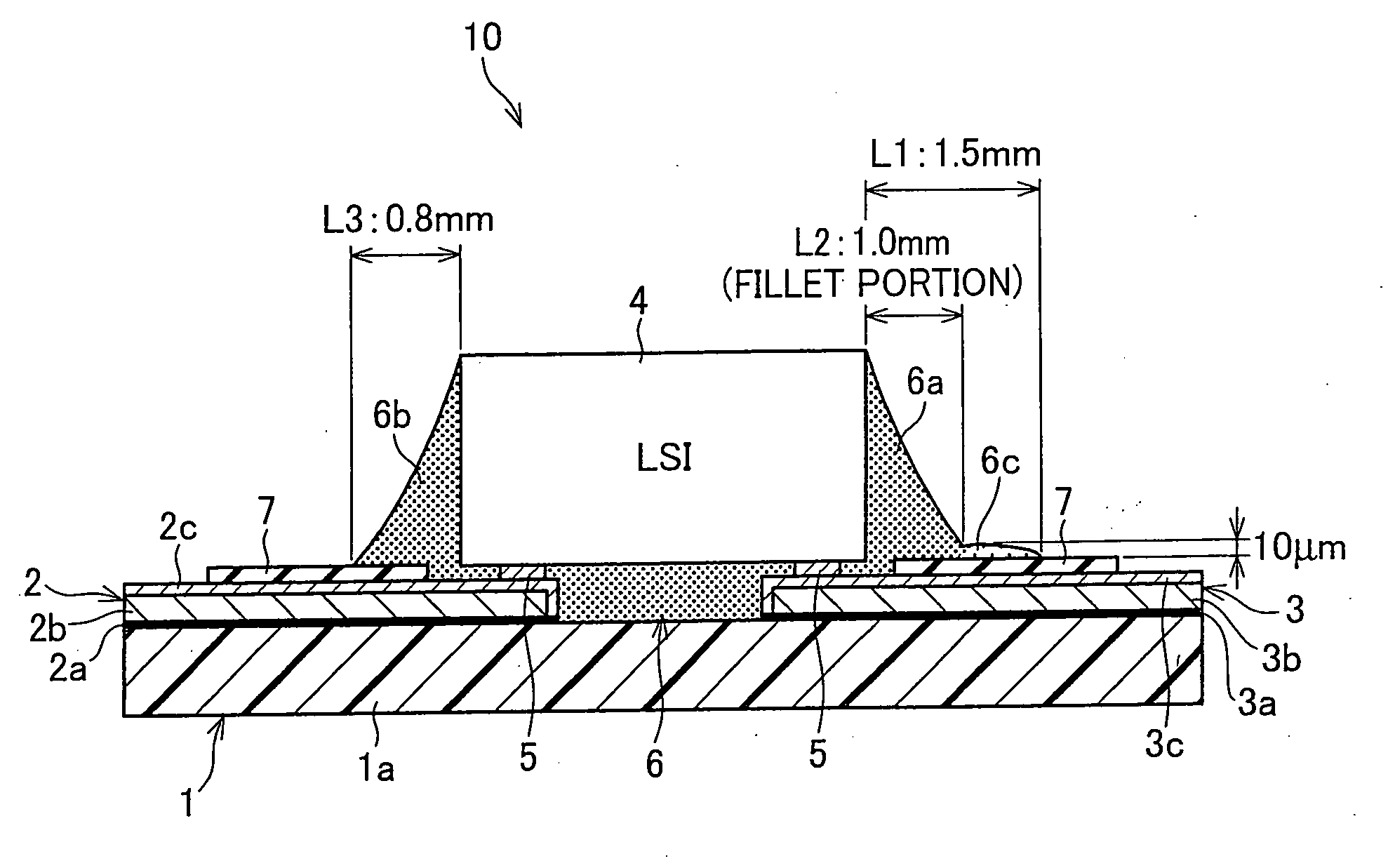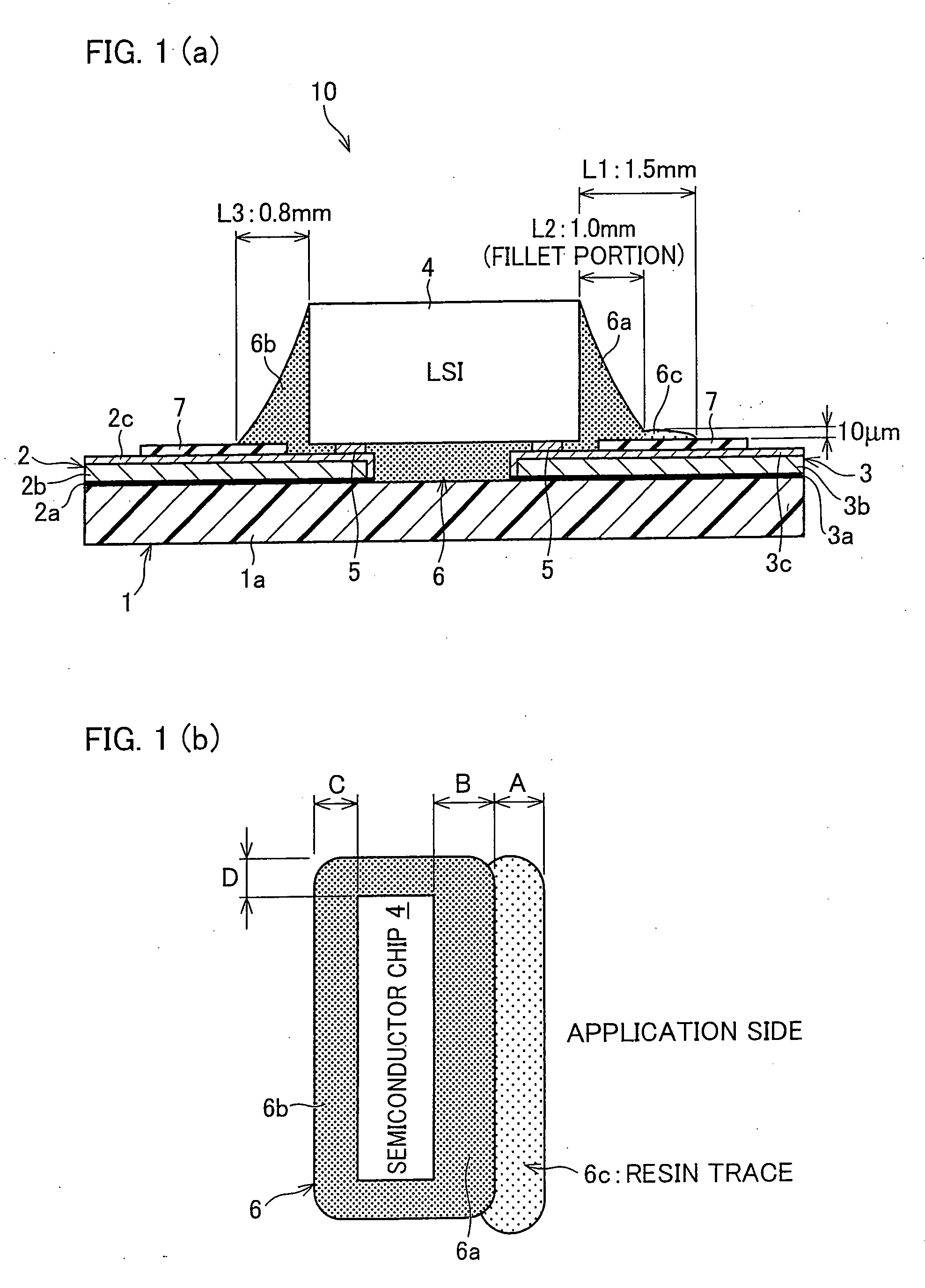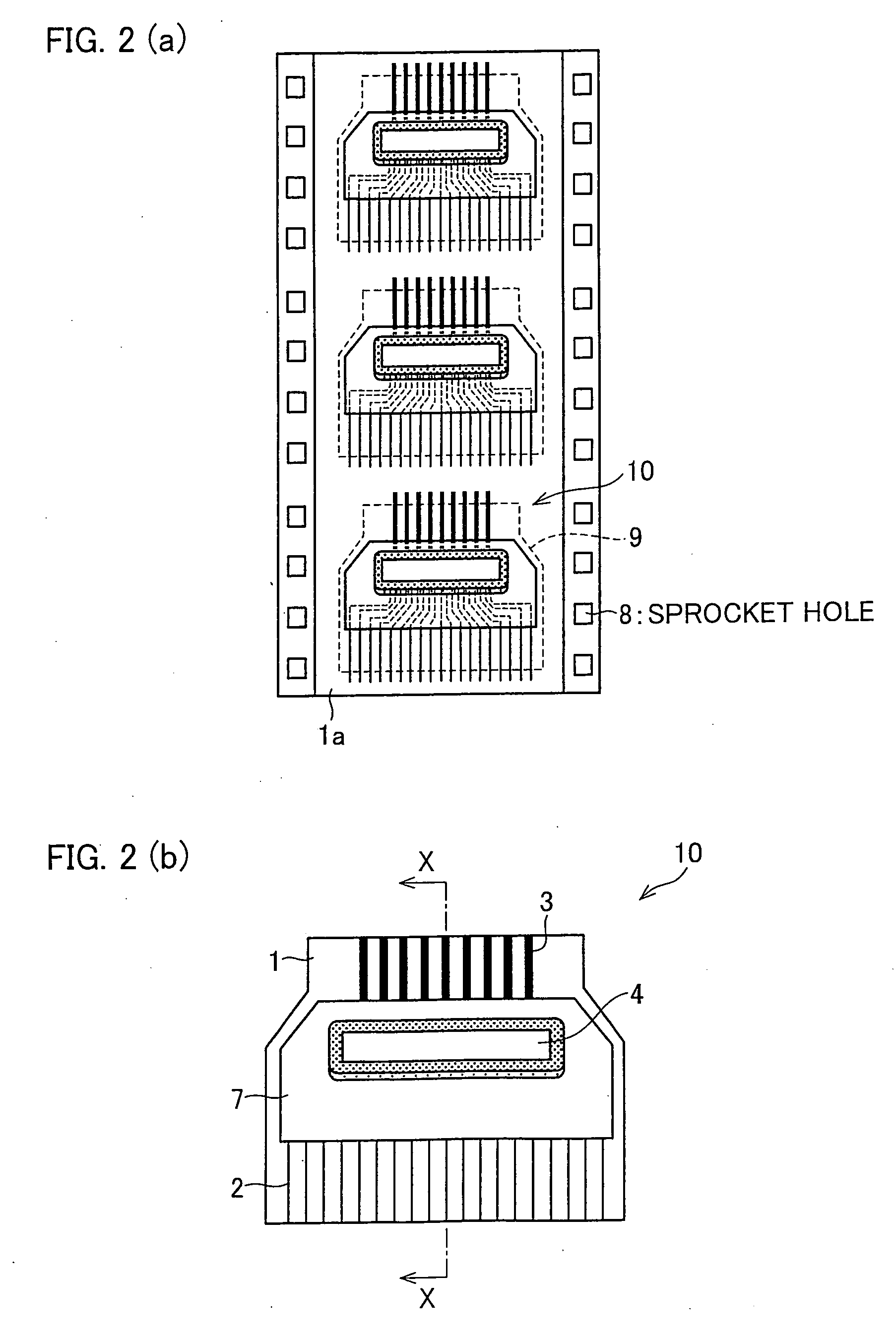Semiconductor device and manufacturing method thereof
a semiconductor and manufacturing method technology, applied in semiconductor devices, semiconductor/solid-state device details, electrical devices, etc., can solve the problems of deterioration of the electric insulating resistance between the terminals, large resin portion becomes a large restriction against product miniaturization, and reduce the region width of the sealing region for protecting the semiconductor element, reduce the outside dimensions of the semiconductor device, and increase the flexibility
- Summary
- Abstract
- Description
- Claims
- Application Information
AI Technical Summary
Benefits of technology
Problems solved by technology
Method used
Image
Examples
example
[0078] For the production of the semiconductor device 10, a sealing resin was applied in a constant quantity via the nozzle 41 along one side of the semiconductor chip 4 as illustrated in FIG. 4(a). The sealing resin contained the coloring agent by 0.15 wt % and had a viscosity of 400 mPa·s at 25° C., as shown in Table 3. The application of the resin was preceded by preheating the semiconductor chip 4 to 90° C. by using a heater, in order to increase the flowability of the sealing resin that would be the under-fill 6 in the gap between the semiconductor chip 4 and the flexible wiring substrate.
[0079] Next, in order to stabilize shapes of the fillets 6a and 6b and the resin trace 6c and to harden the resin, the semiconductor device 10 is treated for a predetermined time enough for the curing the resin, in a curing oven whose temperature is increased to a predetermined temperature with a hot-air circulation or far infra-red heater. Thereby, the curing of the sealing resin is complete...
PUM
 Login to View More
Login to View More Abstract
Description
Claims
Application Information
 Login to View More
Login to View More - R&D
- Intellectual Property
- Life Sciences
- Materials
- Tech Scout
- Unparalleled Data Quality
- Higher Quality Content
- 60% Fewer Hallucinations
Browse by: Latest US Patents, China's latest patents, Technical Efficacy Thesaurus, Application Domain, Technology Topic, Popular Technical Reports.
© 2025 PatSnap. All rights reserved.Legal|Privacy policy|Modern Slavery Act Transparency Statement|Sitemap|About US| Contact US: help@patsnap.com



